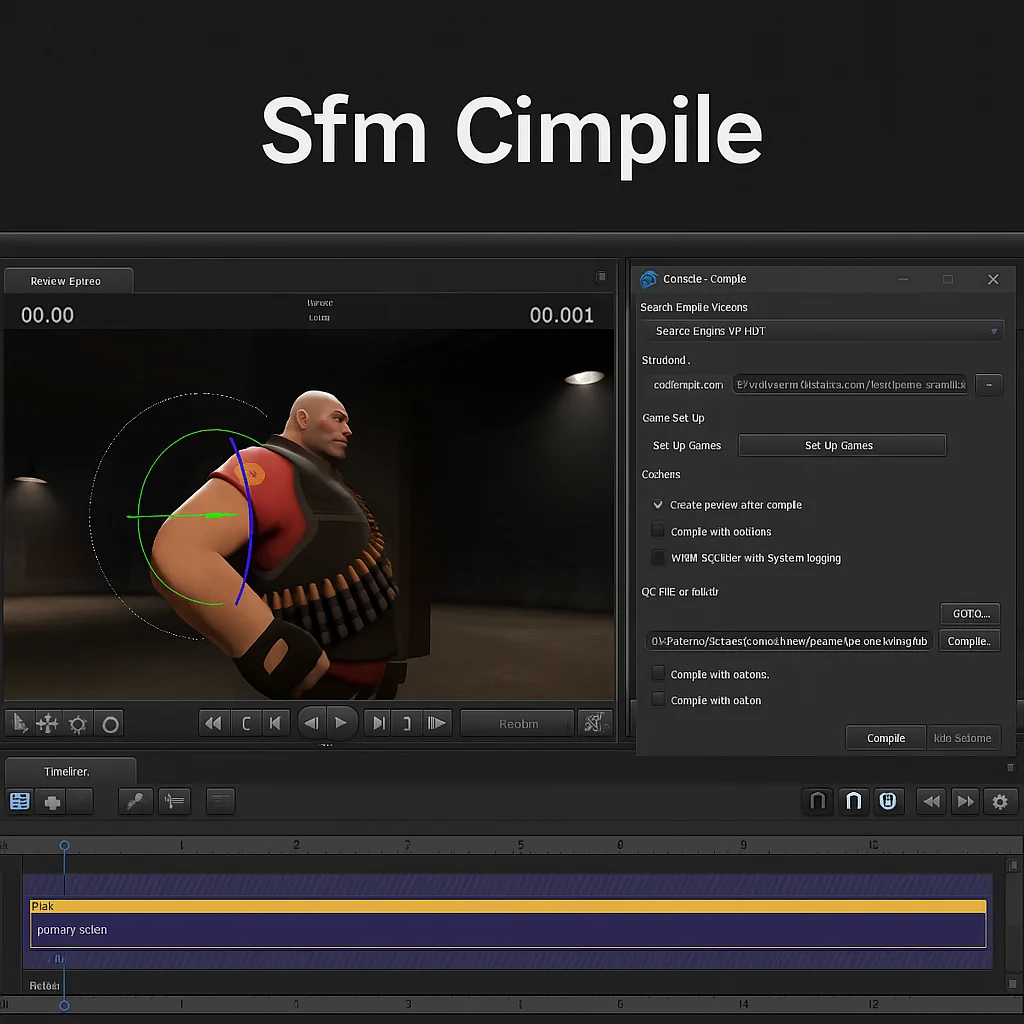Introduction
Welcome to the ultimate guide on sfm cimpile—a crucial process in the Source Filmmaker (SFM) animation ecosystem. Whether you’ve stumbled upon terms like sfm cimpil or are intrigued by the sfm cimpile club, this guide explains their purpose, importance, and how they elevate your animation workflow.
SFM is Valve’s powerful tool for crafting cinematic animations. The sfm cimpile step converts raw content—models, textures, audio—into a polished, shareable video or in-engine asset ready for deployment in your project.
Benefits of Sfm Cimpile
How It Helps in Animation Workflows
Integrating sfm cimpile into your pipeline ensures:
- Optimal playback – Properly compiled assets reduce lag and glitches.
- Seamless integration – Converts external files (.SMD, .DMX, QC scripts) into SFM-compatible formats.
- Reliability – Minimizes errors during export and final animation.
Key Advantages for Animators & Creators
- Time efficiency – Scripted, batch compile processes speed up production.
- Creative control – Fine-tune how models, lighting, and audio are processed.
- Community asset sharing – Exported assets are usable by peers in sfm cimpile club communities, fostering collaboration and feedback.
How to Use/Apply Sfm Cimpile
Step-by-Step Guide
-
Prepare your scene: Set up your SFM timeline—models posed, lights placed, audio synced.
-
Export your animation:
Go to:
File > Export > Movie…
Choose format (e.g., .AVI, MP4, or image sequence), resolution (e.g., 1080p), and frame rate (24–30fps). -
Compile models/maps:
Use tools like Crowbar orstudiomdl.exeto process:-
.QCscripts →.MDL(model) -
Maps →
.BSP(level)
-
-
Run batch compile scripts: If handling multiple assets, automate with batch files to save time.
-
Check the output: Open the compiled asset or render in SFM to validate performance.
-
Export or share: Use the final output in your own scenes or upload to a shared community like the sfm cimpile club.
Common Mistakes to Avoid
- Mismatched frame rates – Leads to audio/video desync.
- Ignoring compile errors – Missing textures or broken models go unnoticed.
- Skipping test renders – Always preview a few frames before full export.
- Incorrect QC scripts – Even a single typo can break the compile process.
Best Practices for Sfm Cimpile
Tips & Tricks for Better Results
- Optimize scenes – Remove unnecessary props and particle effects.
- Use image sequences – Easier to edit in post than compressed videos.
- Apply batch scripts – Maintain consistency across assets.
- Monitor system resources – Prevent crashes on heavy scenes.
Expert Recommendations
- Start with Valve base assets, then introduce custom content.
- Use QA peer reviews in Discord groups or the sfm cimpile club forums.
- Back up all
.QCfiles and compiled binaries with version control. - Stay engaged in the community—many members share templates, presets, and solutions.
FAQs About Sfm Cimpile
Q1: What does “sfm cimpile” mean?
An informal term for the compile phase in Source Filmmaker—rendering scenes or converting models/maps using QC scripts and export tools.
Q2: Is “sfm cimpil” the same thing?
Yes. It’s a spelling variation that refers to the same compile process in SFM.
Q3: What is the “sfm cimpile club”?
A creator community (usually Discord or forums) where users share batch scripts, presets, fixes, and knowledge about SFM compilation workflows.
Q4: What tools help with sfm cimpile?
- Crowbar – For compiling models via
.QCfiles - studiomdl.exe – Valve’s native command-line compiler
- SFM Export Tool – For video rendering
- VTFEdit – For texture editing and conversion
Q5: Why is compiling important?
It ensures your assets render correctly, reduce glitches, and are game/project-ready for high-quality animation output.
Conclusion
In the world of Source Filmmaker, learning to properly execute the sfm cimpile process is the difference between an average edit and a polished, cinematic experience.
Whether you’re a hobbyist or a full-time animator, mastering this step:
- Saves time
- Minimizes technical errors
- Expands your creative control
By using tools like Crowbar, writing clean QC scripts, and collaborating in communities like the sfm cimpile club, you’ll not only become more efficient—you’ll evolve as a creator.


